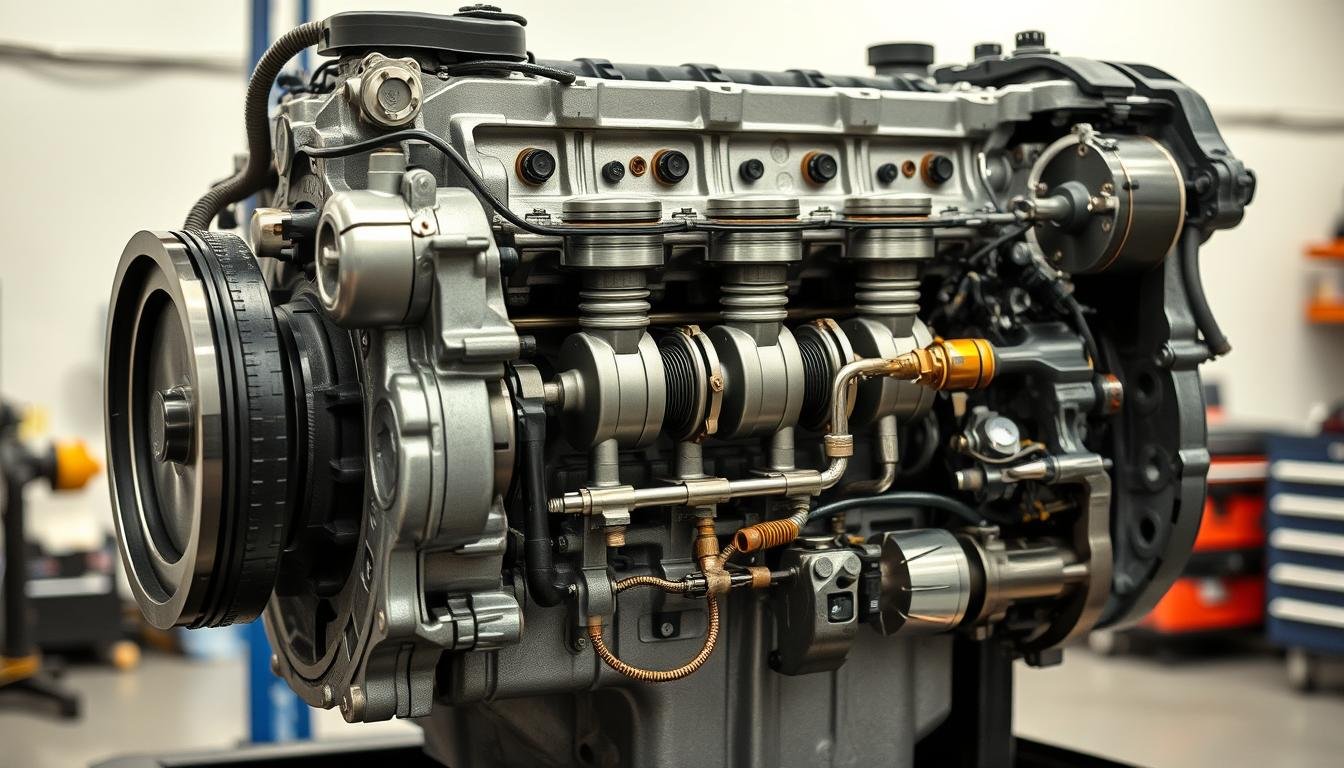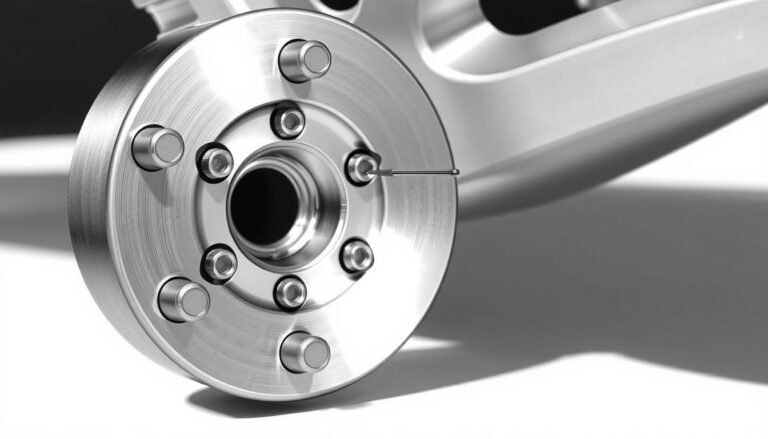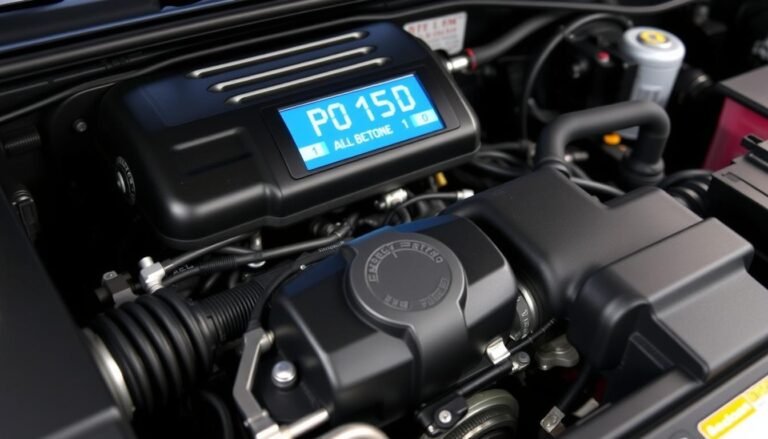Common 5.3-Liter Chevy Engine Problems Issues & Fixes
The 5.3-liter Chevy engine is famous for its strength. But it sometimes faces issues that can hinder its performance.
This article will guide you through identifying, understanding, and fixing these common engine problems.
First, watch for signs such as losing coolant, the engine misfiring, and using too much oil. These signs might mean there are bigger issues.
You’ll then need to look closely at parts like the intake manifold, fuel pressure regulator, and spark plugs.
We’ll provide clear directions for fixing these issues, which will help you face any engine trouble confidently. So, if you’re skilled in DIY or new to car ownership, keep reading.
You’ll learn about the 5.3-liter Chevy engine’s common issues and how to keep your engine in top shape. Let’s dive in!
Introduction To The 5.3-Liter Chevy Engine
The 5.3-liter Chevy engine is well-known for its strength in Chevy vehicles, like trucks and SUVs.
It strikes a perfect balance between power and fuel-saving, which is why so many people like it. Models like the Chevrolet Silverado and Tahoe use this engine, meeting different driving needs.
Knowing the details of the 5.3-liter Chevy engine is crucial for car owners. This engine is generally reliable, but keeping up with maintenance can avoid future problems.
Being aware of common issues with the 5.3-liter engine can also make your driving smoother.
What is Common 5.3-Liter Chevy Engine Problems?
The 5.3-liter Chevy engine is known for strong performance and being reliable. A detailed look at this engine shows it can stay reliable with normal use.
Knowing its common issues can make your experience better and help your vehicle last longer.
Overview of Engine Reliability
The 5.3-liter Chevy engine’s reliability is generally great if you take good care of it. You can look forward to reliable performance for many years.
Just make sure to follow the service schedule. Doing regular maintenance is key to keeping the engine durable.
Keeping up with oil changes and check-ups helps stop problems from getting bigger.
Importance of Awareness For Potential Issues
Knowing about possible problems with the 5.3-liter engine makes you a better vehicle owner. Learning about common issues means you can better take care of your engine.
Taking care of small problems early can stop bigger repairs later. This will keep your engine reliable for a longer time.
| Aspect | Details |
|---|---|
| Common Issues | Oil consumption, coolant loss, misfiring |
| Maintenance Frequency | Every 5,000 to 7,500 miles |
| Typical Repairs | Gasket replacements, engine tuning |
| Engine Lifespan | 200,000 miles or more with proper care |
Coolant Loss: A Widespread Problem
If your Chevy has a 5.3-liter engine, coolant loss can be a big problem. It’s vital to spot the signs early.
This way, you keep the engine safe and avoid expensive fixes. Signs include your Chevy getting too hot and the check engine light coming on.
Symptoms of Coolant Loss
Watch for these coolant loss signs:
- Overheating engine
- Frequent need to add coolant
- Visible leaks under the vehicle
- White smoke from the exhaust
- Check engine light illuminated
Root Causes of Coolant Loss
Several things can cause your 5.3-liter engine to lose coolant. Common reasons are:
- Leaking hoses or radiator
- Faulty water pump
- Cracks in the engine block or cylinder head
- Head gasket failure
- Improper coolant mixture or age
Estimated Repair Costs
Fixing coolant loss fast is key. The cost varies based on the problem. Below are rough cost estimates for usual repairs:
| Issue | Estimated Cost |
|---|---|
| Leaking Radiator | $300 – $600 |
| Water Pump Replacement | $400 – $800 |
| Head Gasket Replacement | $1,000 – $2,500 |
Dealing with coolant loss right keeps your engine running well longer. Always check your coolant level. And look out for any warning signs.
Misfiring: Causes and Solutions
Engine misfiring in 5.3-liter Chevy engines can lead to frustrating performance issues. Symptoms like loud engine noises, stalling, or poor acceleration are common.
It’s important to recognize these early to keep your vehicle running well and avoid further damage.
Identification of Misfiring Symptoms
Common symptoms that indicate an engine misfire include:
- Unexpected jerking or stumbling while driving
- Rough idling that feels shaky
- Loud noises like popping or banging from the engine
- Strong exhaust odors resembling unburnt fuel
- An illuminated or flashing check engine light
If your vehicle shows these signs, you need to act fast. A diagnostic check will help find the problem and fix it effectively.
Potential Causes of Misfiring in 5.3 Engines
Misfires can come from various issues. Key factors include:
- Faulty spark plugs or ignition coils
- Malfunctioning fuel injectors
- Low engine compression
- Incorrect air-fuel mixture
- Vacuum leaks affecting combustion
- Problems with mass air flow (MAF) sensors
These parts are crucial for your engine’s performance. Keeping up with maintenance and inspections helps catch misfires early.
Cost Considerations For Misfiring Repairs
The repair costs for engine misfires can vary a lot. Simple fixes like changing spark plugs may cost between $100 and $300.
But more complex issues might go up to $1,200 or more. Noticing misfire symptoms early can save money by avoiding bigger problems later.
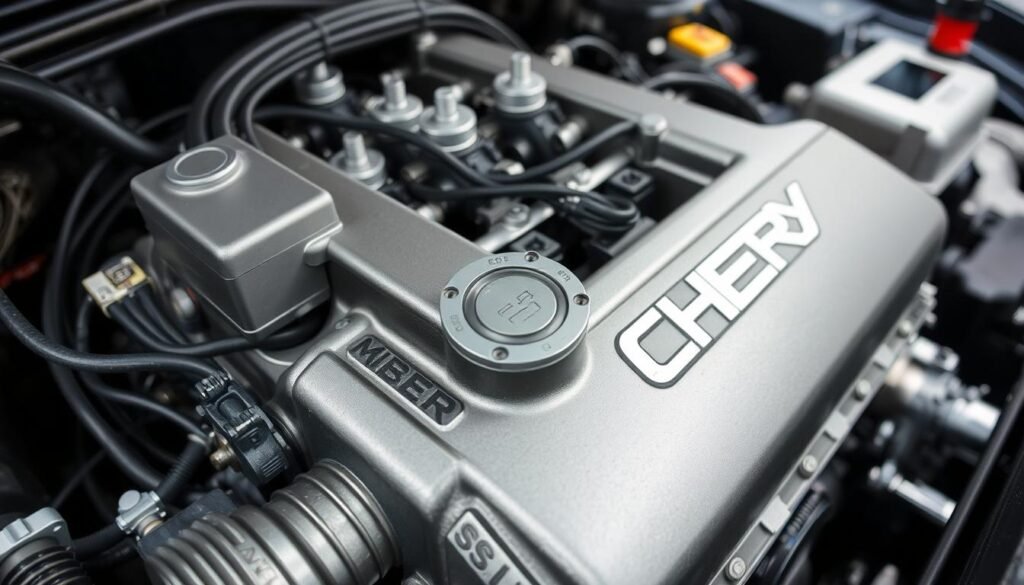
Major Oil Consumption: A Notable Concern
Oil use affects how well your Chevy 5.3 engine runs. Knowing the signs and causes of oil use is vital.
Catching these issues early with the Chevy 5.3 can save you time and money. It also stops your car from getting worse damage.
Identifying Major Oil Consumption Symptoms
It’s important to know the signs of too much oil use. Look for these clues:
- Oil level drops quickly over a few miles.
- Smoke comes out of the exhaust, especially when speeding up.
- The engine doesn’t work as well, losing power or using more fuel.
- You might hear odd sounds from the engine, like knocks or taps.
Key Factors Contributing To Oil Consumption
Many things can cause your Chevy 5.3 engine to use a lot of oil. These are the usual reasons:
- Piston rings getting worn or damaged, letting oil leak into the engine.
- Wear on valve guides, causing oil leaks into the engine’s air or exhaust paths.
- Leaks from bad gaskets and seals that should keep oil in the engine.
- The engine getting too hot, which makes the oil thin and vanish.
Repair Options and Cost Implications
There are many ways to fix oil consumption issues in your Chevy 5.3. Repairs can be small or big, depending on the problem:
| Repair Option | Description | Estimated Cost |
|---|---|---|
| Piston Ring Replacement | Changing old piston rings to stop oil leaks into the engine. | $1,500 – $3,000 |
| Valve Guide Seals Replacement | Changing old seals to stop oil leaks into the air or exhaust paths. | $800 – $1,200 |
| Gaskets and Seal Replacement | Putting in new seals and gaskets to keep oil inside the engine. | $500 – $1,000 |
Issues with Intake Manifolds and Gaskets
Problems with the intake manifold and gasket in your 5.3-liter Chevy can cause several engine issues.
Knowing when there’s trouble, what usually goes wrong, and how much repairs might cost is key.
You might notice rough engine idling, bad gas mileage, or a check engine light that won’t turn off. Keeping an eye on these signs can help you prevent bigger problems.
Signs of Intake Manifold Problems
Finding problems with your intake manifold early helps keep your engine running smoothly.
Watch out for these warning signs:
- Rough idling or stalling
- Check engine light illumination
- Unusual engine noises
- Decreased fuel efficiency
Common Failures and Their Causes
Many things can cause Chevy intake gasket failure, like getting old, overheating, and natural wear and tear.
When things go wrong, you might see:
- Cracks in the intake manifold
- Gasket wearing out
- Oil leaks and pressure loss
Expected Costs For Repairs
Fixing an intake manifold and gasket can cost differently depending on the problem and where you live.
Generally, you could expect to pay:
| Repair Type | Estimated Cost |
|---|---|
| Intake Manifold Replacement | $300 – $700 |
| Intake Gasket Replacement | $200 – $500 |
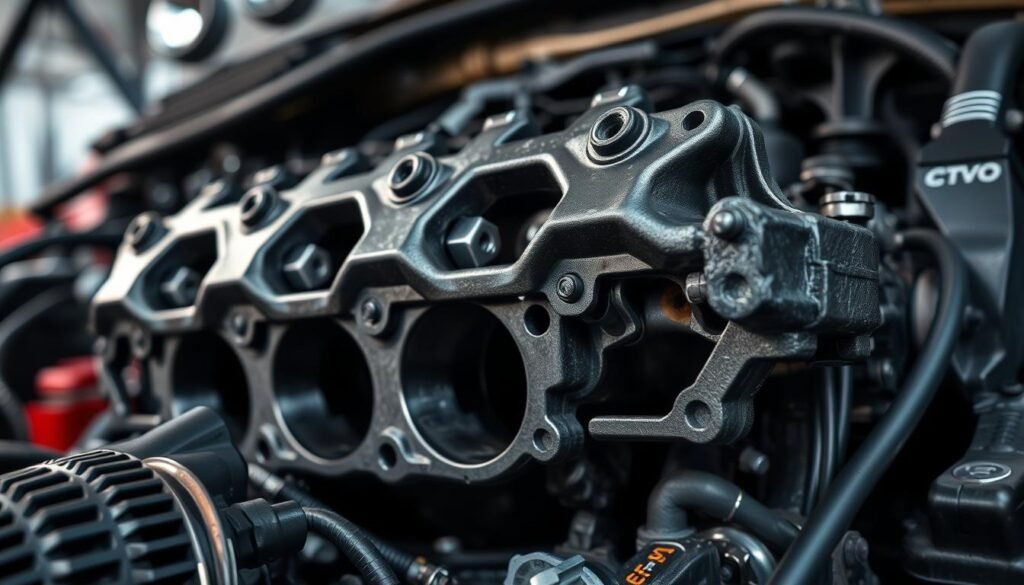
Fuel Pressure Regulator Problems
Fuel pressure regulators are key to keeping your Chevy’s fuel pressure right. Spotting problems early can prevent bigger repairs later. You might see your car having trouble starting or stalling for no clear reason.
If you do, the fuel system might be to blame. Knowing these signs helps you find out what’s wrong sooner.
How To Spot Fuel Pressure Issues?
Look for these clues to identify Chevy fuel problems:
- Difficulty starting the engine
- Engine stalling after starting
- Decreased engine performance
- Unusual fuel odors
- Poor fuel economy
Common Symptoms of Regulator Failure
If your fuel pressure regulator is failing, watch for these signs:
- Fuel leaks around the regulator
- Erratic or unstable engine operation
- Check engine light activation
- Increased tailpipe emissions
Repairing The Fuel Pressure Regulator
To fix a faulty fuel pressure regulator, follow these steps:
- Verify pressure readings with a fuel pressure gauge.
- Inspect for visible leaks around the regulator.
- Replace the regulator if pressure is outside of the manufacturer’s specifications.
- Check for potential fuel line obstructions.
Engine Sludge Build-Up: Prevention and Solutions
Engine sludge is a worry for many with 5.3-liter engines in their cars. Learning about how sludge forms, spotting its signs, and preventing it are key. They help keep your engine in good shape.
How Sludge Forms in The 5.3-Liter Engine
Engine sludge starts when oil mixes with dirt and other junk while the engine runs. This mix turns into a thick sludge that blocks oil flow.
Not changing oil often, using bad oil, and tough driving can make sludge worse in 5.3 liter engines. This can lower your engine’s power.
Signs of Engine Sludge and Its Effects
- Reduced oil flow leading to overheating.
- Increased engine noise and reduced performance.
- Unusual oil discolouration and sludge texture.
- Frequent oil leaks and increased consumption of oil.
Catching these signs early can stop bigger engine troubles and expensive fixes due to sludge.
Best Practices For Avoiding Sludge Accumulation
- Perform regular oil changes with high-quality oil.
- Monitor oil levels and quality frequently.
- Drive your vehicle on longer trips to help maintain optimal oil temperature.
- Use a good-quality oil filter to enhance filtration.
By following these steps, you can nearly stop sludge from forming in your 5.3-liter engine. Your car will run better and last longer.
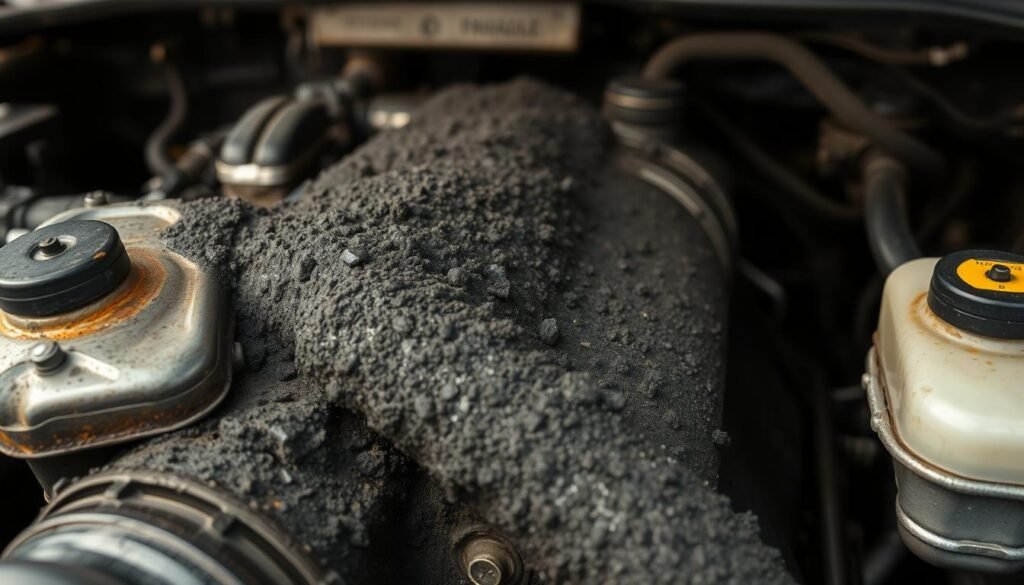
Spark Plug Issues in The 5.3-Liter Chevy Engine
Spark plug issues can make your 5.3-liter Chevy engine run poorly. It’s key to spot these problems early to keep your engine working well. Here are the signs, causes, and how to fix them.
Recognizing Spark Plug Problems
If your car is hard to start, misfires, or uses too much gas, your spark plugs might be to blame. These signs mean it’s time to check your spark plugs.
You might also feel the engine idling roughly or speeding up unexpectedly. Fixing these issues quickly helps avoid bigger problems.
Common Causes of Spark Plug Failures
Several things can cause spark plug problems in Chevys. Common causes include:
- Wearing out from lots of driving.
- Incorrect gap settings causing poor ignition.
- Oil or fuel leaks dirtying the plugs.
- Using low-quality spark plugs that fail under heat.
Repairing or Replacing Spark Plugs
When you find a problem with a spark plug, you can either fix it or get a new one. Cleaning the spark plugs might work if they’re slightly worn.
But if they’re badly damaged, it’s best to replace them. Here’s what you might pay for spark plug services:
| Service Type | Estimated Cost | Time Required |
|---|---|---|
| Cleaning Spark Plugs | $20 – $50 | 1 Hour |
| Replacing Spark Plugs | $100 – $250 | 2 – 3 Hours |
Checking your spark plugs often can help you avoid these issues. This way, your Chevy will keep running well.
Malfunctioning Sensors and Their Impact
Sensors are key parts of your 5.3-liter Chevy engine. They provide vital info that impacts the engine’s performance.
By checking engine stats, these sensors talk to the engine’s brain, the ECU. This chat is crucial for fine-tuning the fuel and air blend, which boosts engine efficiency.
Knowing how important sensors are helps avoid engine problems and expensive fixes.
The Role of Sensors in Engine Performance
Sensors are essential for keeping an eye on engine health. They collect specific data about how the engine works, like temperature, pressure, and airflow.
This info lets the ECU adjust things on the fly, to keep the engine running well in different situations. If a sensor isn’t working right, the engine might run badly and pollute more.
Indicators of Sensor Malfunctions
Spotting sensor problems early can prevent big headaches. Look out for these signs that a sensor might be failing:
- Dashboard warning lights are on.
- Bad gas mileage.
- Engine idles weirdly or misfires.
- Trouble starting the engine.
- More pollutants from the exhaust.
Repair Options For Faulty Sensors
Fixing sensor issues can be done in a few ways, depending on the problem:
- Recalibrating sensors for correct data.
- Replacing sensors that are damaged or old.
- Checking sensors regularly as part of upkeep.
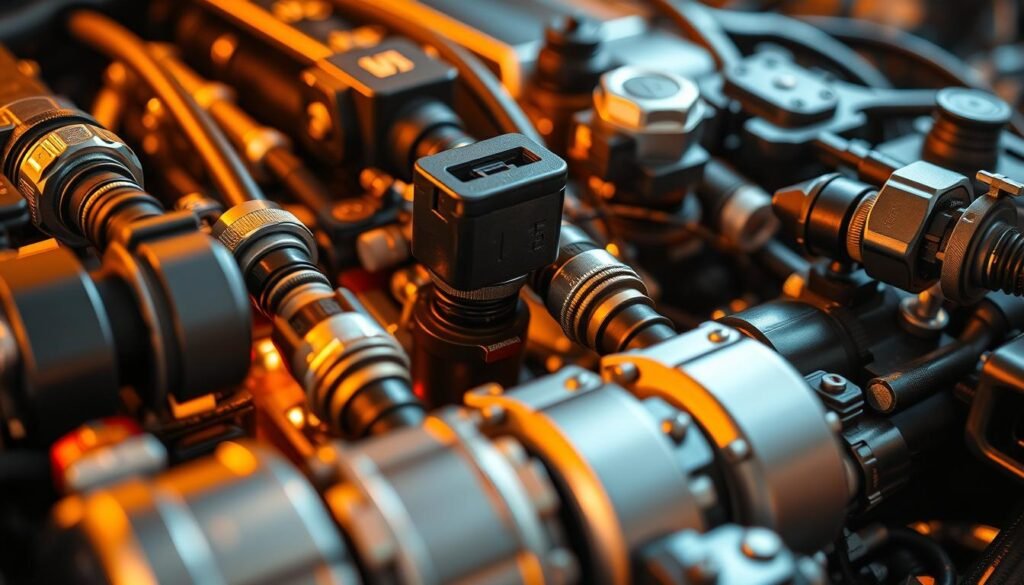
Preventive Measures For Avoiding 5.3-Liter Chevy Engine Problems
To keep your 5.3-liter Chevy engine running well, regular upkeep is essential. This means doing routine checks and timely repairs.
This will help you avoid common issues and boost your engine’s performance. By keeping up with maintenance, your Chevy will work better and last longer.
Regular Maintenance Tips
- Change the engine oil every 3,000 to 5,000 miles to keep the engine lubricated and functioning optimally.
- Replace the fuel and air filters as per the manufacturer’s recommendations to ensure the engine receives clean airflow and fuel.
- Inspect the coolant level regularly and flush the cooling system every couple of years to avoid overheating issues.
- Check and replace spark plugs as needed, typically around 60,000 miles, to maintain optimal firing and engine efficiency.
- Conduct regular inspections of belts and hoses for any signs of wear or damage, ensuring proper function and avoiding breakdowns.
Signs You Should Look Out For
It’s important to know when your engine might have issues. Regularly check your engine if you notice:
- Unusual noises, such as knocking or tapping, which may signal engine wear or failure.
- Warning lights on the dashboard, particularly the check engine light.
- Excessive smoke from the exhaust, which could suggest burning oil or coolant issues.
- Decreased fuel efficiency, indicating potential engine or fuel system problems.
Conclusion
Dealing with issues in your 5.3-liter Chevy engine might seem tough. But, understanding common problems, symptoms, and how to fix them makes you a smart owner.
We’ve covered important topics like losing coolant, engine misfires, and using too much oil. This info is key to keep your car running well for a long time.
Regular checks are the best way to avoid these problems. Look out for signs like lower power or weird noises from the engine.
Catching issues early can stop them from getting worse. This guide emphasizes how crucial it is to be watchful and act quickly to enjoy a smooth ride for longer.
To wrap up, being informed and active about your 5.3-liter Chevy engine’s health lets you face problems directly.
With the right knowledge and a hands-on approach, you can keep your engine in top shape. This means your car will be reliable for many more miles.
FAQs
What are common problems associated with the 5.3-liter Chevy engine?
Common issues include losing coolant, engine misfires, using too much oil, problems with the intake manifold, issues with fuel pressure, sludge build-up in the engine, and spark plug failures.
How can I identify if my 5.3-liter engine is experiencing coolant loss?
Signs of losing coolant are an engine that overheats, a lit check engine light, and low coolant. Check regularly for leaks and coolant levels to catch any problems early.
What causes misfiring in a 5.3-liter Chevy engine?
Misfires can happen due to bad spark plugs, issues with fuel delivery, or ignition system failures. Look out for loud engine noises or weak acceleration as signs.
How can I troubleshoot excessive oil consumption in my 5.3-liter engine?
Watch for low oil levels after driving only a short distance. Check the engine for leaks and check if piston rings or valve seals are worn out.
What repairs are needed for intake manifold problems in a 5.3-liter engine?
Fixing it may need replacing the gaskets or the whole intake manifold. Symptoms include rough engine idling and a persistent check engine light.
How do I spot fuel pressure regulator issues in my Chevy 5.3 engine?
Symptoms of fuel pressure issues are hard starts, stalling, or weak acceleration. Testing can confirm if there’s a fuel pressure problem.
What can lead to engine sludge build-up in a 5.3-liter engine?
Sludge forms when oil mixes with dirt and carbon, usually from not changing oil often and poor upkeep. Regularly changing oil helps prevent sludge.
How often should I replace the spark plugs in my 5.3-liter Chevy engine?
Typically, change spark plugs every 30,000 to 100,000 miles. This depends on how you drive and the spark plug type. It’s good to check them regularly.
What proactive measures can I take to avoid 5.3-liter Chevy engine problems?
Keeping up with regular maintenance like changing oil on time, replacing filters, and doing inspections is key. Also, quickly deal with any warning signs.

